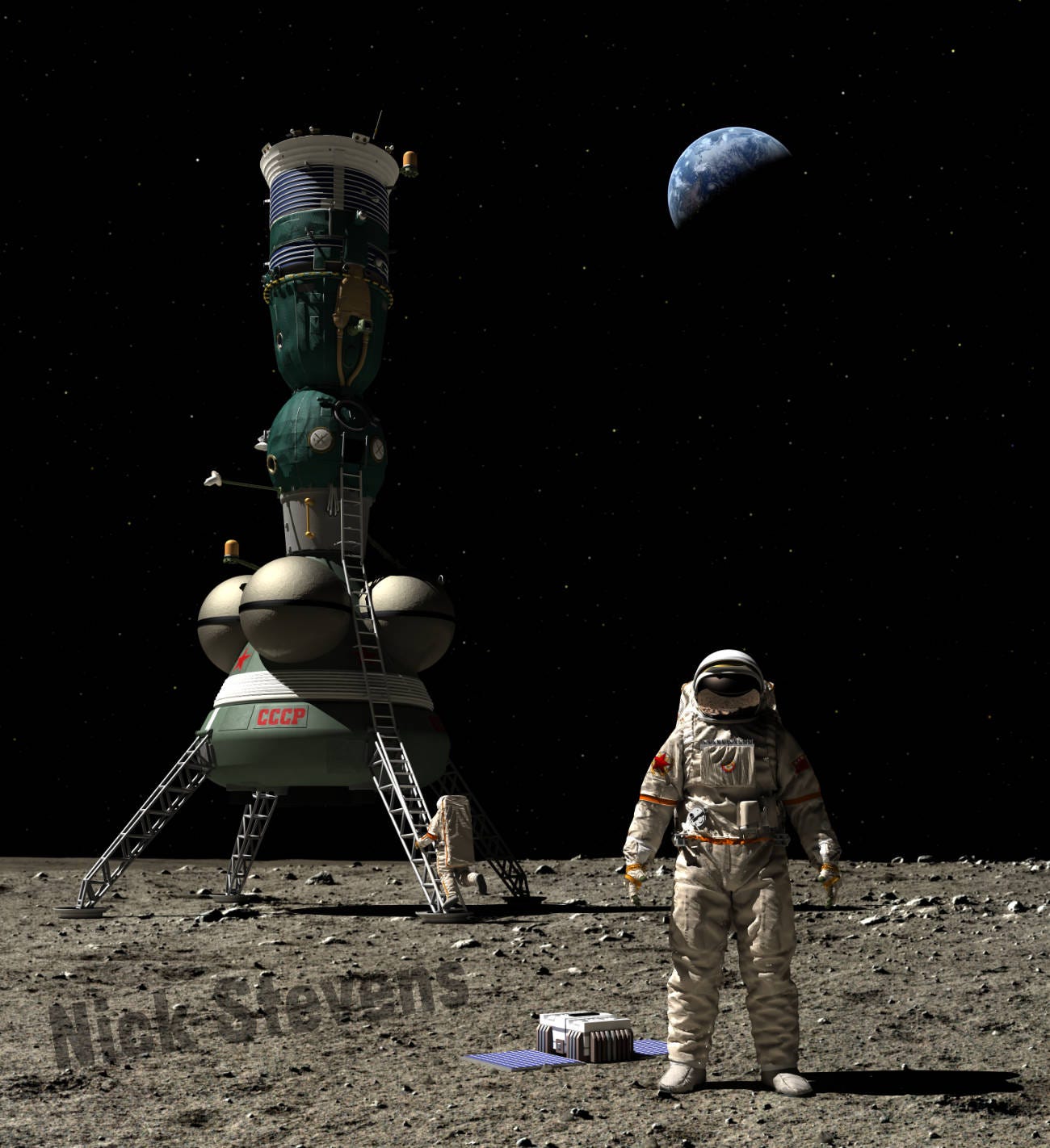Part 1. The Original N-1 Design.
Smaller, and not crew rated.
Although it never got close to flying, you can’t understand the Soviet Lunar program without appreciating the influence of the first version of this rocket.
Korolov’s first proposals for the N1 were in January 1960, over a year before Gagarin’s flight. The need for something a LOT more capable than an R7 was already clear, even with the improvements that were planned, (and delivered). By the 23rd June 1960, a plan had been approved. And immediately the various engineering bureaus started to fight about who was going to do what.
The first design was never properly funded, and the whole crewed lunar effort was not taken seriously until the Americans demonstrated they were serious, and perfectly capable of surpassing the Soviet Union. This delay in getting started put the Soviet Union at a huge disadvantage.
It also made it very difficult to select any alternative design for the heavy lift rocket. If the objective was to beat the Americans, there simply was not time to start again. And the N1 was already underway.
I will cover the competing designs, and how the N-1 evolved into the flight version in a later article.
Declassified illustration of the original N1
The first version had some major differences from the variants that eventually flew. Most famously, there were 6 fewer engines in the first stage, and the payload capacity was only 75 metric tonnes to low Earth orbit, barely over half the capability of a Saturn V. The open interstage is also subtly different - there are two rings around the middle, not one. Another difference that gets less attention was that the first stage was open at the side, with air flowing in, and then out through the base of the rocket. Also it was NOT to be crew rated – the plan was that any crew would be launched separately on an R7, and board in orbit.
N1 with different fairings.
Why do many Soviet rockets have an open area between the stages? This is because the second stage starts just before the first stage shuts down. The Saturn V has a short pause between the end of stage one, and the start of stage two. This means the second stage needs small rocket motors called “Ullage Motors”, to settle the fuel. It’s more efficient, but more complex.
Due to the lower lift, some ingenuity was required to get a practical crewed lunar mission. This was further complicated by the extreme reluctance of all concerned to use a mission design that required rendezvous and docking in Lunar orbit. Successful docking in EARTH orbit was still some way off, and the perils of trying this in lunar orbit were to be avoided, if at all possible.
This resulted in mission profiles that required direct ascent and return, straight up and straight back again. Which needs much more fuel, and therefore a much heavier spacecraft. So Korolev returned to his tanker schemes.
On 22 April 1963, OKB-1 submitted the first serious proposals to put a Soviet citizen on the lunar surface as part of the L3 programme. Korolev's team studied different architectures requiring multiple launches of the N1 rocket. The crew of two or three cosmonauts would travel aboard a Soyuz spacecraft that would take off separately.
19k and associated craft.
The favoured architecture was Earth orbit Rendezvous, with three N1 launches and one Soyuz spacecraft. Once the lunar spacecraft had been assembled, the assembly would set a direct course for the Moon. The first launch would put the lunar descent stage into orbit along with the unfuelled Earth escape stage. The assembly was the 19K spacecraft. Two 21K tankers would then lift off, to fill the 19K tanks with fuel. Refuelling was to be via a manoeuvring module located at the rear of the 19K.
The tankers were big conical spacecraft with a mass of about 75 tonnes. Once fuelling was complete, the manned Soyuz L3 would dock with the 19K assembly. The L3 with the descent stage would form the actual lunar spacecraft - The unique thing about this architecture is that the Soyuz would land on the Moon “head first”.
Illustration of a successful 19k landing on the Moon.
Note that for the landing, the crew would be in the orbital module, not the descent module, and seated “the right way up”. The section with the legs and the parts below the 4 spherical tanks would be left on the Moon when the other sections launched for home. I’ve not illustrated that yet, but it’s coming!
And that’s it for this part.
A key resource for this article was Daniel Marin’s blog, you will find a LOT more cool information there.
That’s it for Part 1. Part 2 covers the status of the book, and also has this issue’s cool link and cool image. See you there!









Hot staging is more efficient, both because you can save weight by omitting the ullage motors and because you get higher average thrust (so less gravity loss)